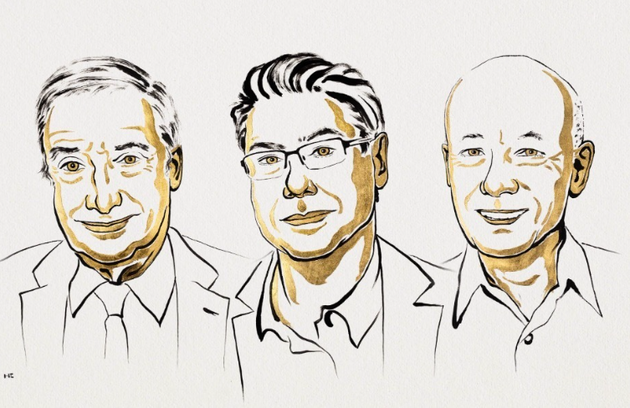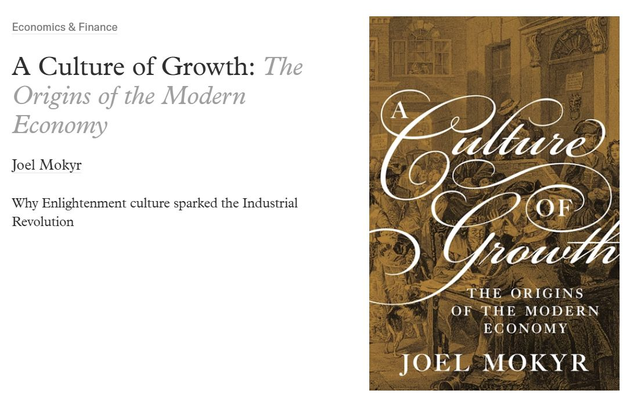On October 13, the Royal Swedish Academy of Sciences has awarded the 2025 Nobel Memorial Prize in Economic Sciences to Joel Mokyr, Philippe Aghion, and Peter Howitt for their profound work explaining innovation-driven economic growth. The prize money is set at 11 million Swedish Kronor.

Photo/ Official website of Nobel Prize
Nobel economics prize recognizes creative destruction in innovation and growth
Joel Mokyr, Philippe Aghion and Peter Howitt won the 2025 Nobel economics prize on Monday for their work on how innovation and the forces of "creative destruction" can drive economic growth and lift living standards across the globe.
The award is divided into two halves:
Joel Mokyr received half the prize for "determining the prerequisites for sustained growth through technological progress." His work highlights how scientific breakthroughs and practical application form a self-sustaining cycle, with cultural and institutional factors—such as an open attitude toward change—being crucial for the continuous accumulation of "useful knowledge."
Mokyr, 79, is a Professor at Northwestern University, born in Leiden, Netherlands, to Holocaust survivors.
The other half of the prize is awarded to the economists Philippe Aghion and Peter Howitt. In a joint publication from 1992, they constructed a mathematical model of how companies invest in improved production processes and new, better-quality products, while the companies that previously had the best products are outcompeted. Growth arises through creative destruction. This process is creative because it builds upon innovation, but it is also destructive because older products become obsolete and lose their commercial value. Over time, this process has fundamentally changed our societies – over the span of one or two centuries, almost everything has changed.
Aghion, 69, a Professor at Harvard University and the London School of Economics, is the son of the founder of the Chloé fashion house. Howitt, 79, a Professor at Brown University, is described as a rigorous "theoretical craftsman."
RDCY's Wang Yanxing: Unveiling the 'Black Box' of Economic Growth, Moving Forward with 'Creative Destruction'
In an interview with National Business Daily (NBD), Wang Yanxing, Senior Researcher at the Chongyang Institute for Financial Studies, Renmin University of China (RDCY), interpreted the 2025 Nobel Prize in Economics:
Economic historian Joel Mokyr, through a deep analysis of technological change and the evolution of knowledge systems over the past 500 years, broke through the long-standing "mysticism" surrounding growth in economics. Combining extensive micro-historical data with macro-narratives, he pointed out that modern economic growth was truly ignited after the Industrial Revolution not by a single technological breakthrough, but by a shift in the intellectual paradigm: humanity began systematically asking "why," not just "how."
In works like A Culture of Growth: The Origins of the Modern Economy, Mokyr distinguished the dynamic relationship between "useful knowledge" and "technical capability." He argued that the accumulation of scientific explanatory power, rather than just empirical craftsmanship, is the foundation for sustained technological evolution. Crucially, Mokyr emphasized the interaction of culture, institutions, and cognitive structures—a society must possess mechanisms to accommodate, protect, and reward new ideas for innovation to endure. This is why 17th-century Britain pioneered the path to growth: not due to natural resources, but to intellectual liberation. If economic growth is a rocket, institutions are the fuel, and intellectual openness is the ignition device.

Mokyr explained why innovation ignited at certain moments, while Aghion and Howitt revealed how innovation became the "sustained engine" of economic growth. Their pioneering 1992 paper, A Model of Growth Through Creative Destruction, formalized Joseph Schumpeter's theory of creative destruction into a mainstream economic growth model, establishing Schumpeterian Growth Theory as the third-generation growth theory after the Solow and AK models.
The essence of economic growth is the struggle between the old and the new. The emergence of new products and technologies rapidly devalues the old, driving resource reallocation toward more efficient directions. Innovation is both creation and destruction. Destruction is not just unavoidable—it is necessary.
Aghion and Howitt applied this theory to various fields, proposing a highly policy-relevant notion: innovation is not guaranteed to happen spontaneously; the state must use institutional design to unleash the positive effects of creative destruction while managing its social costs. "Creative destruction" is the engine of civilizational progress, but it can also crush social stability. If the "destruction" is not managed, innovation can become the enemy of growth.
Tsinghua University's Xie Danxia: The Teaching of Aghion and Mokyr Had a Significant Impact on Me
Xie Danxia, Doctoral Supervisor and Tenured Associate Professor at the Institute of Economics, School of Social Sciences, Tsinghua University, recalled his learning experiences with Aghion and Mokyr to NBD:
While pursuing my Ph.D. at Harvard, my first economic growth course was co-taught by Daron Acemoglu and Aghion, split between MIT and Harvard. Unlike Acemoglu, Aghion taught without slides, primarily using chalk on the blackboard for step-by-step mathematical derivations, showcasing the strong mathematical foundation characteristic of the French school. The model proposed by Aghion and Howitt, based on Schumpeter's idea of "creative destruction," highlights that new products constantly drive old ones out of the market, serving as a critical source of sustainable economic growth.
Their research also pointed out an inverted U-shaped relationship between competition and innovation—neither too little nor too much competition is beneficial for innovation. This offers excellent inspiration for China's current development of new quality productive forces. These experiences cemented my strong interest in economic growth research, leading me to propose the "Endogenous Growth Theory of Data Innovation" upon returning to China.
Later, while pursuing my Ph.D. at the University of Chicago, my keen interest in innovation and economic growth prompted me to drive forty minutes to Northwestern University to meet with Professor Mokyr. Professor Mokyr warmly invited me to audit his course on the history of technology.
Mokyr's research profoundly integrates intellectual history, political history, and economic history, combining vivid narratives with rigorous econometric methods to comprehensively examine the many mechanisms influencing economic growth. Influenced by Professor Mokyr, I also proposed a new mechanism for explaining long-term economic growth, particularly the origins of the Industrial Revolution—that the development of information carriers like papermaking and printing may have been a significant contributing factor.


 川公网安备 51019002001991号
川公网安备 51019002001991号





